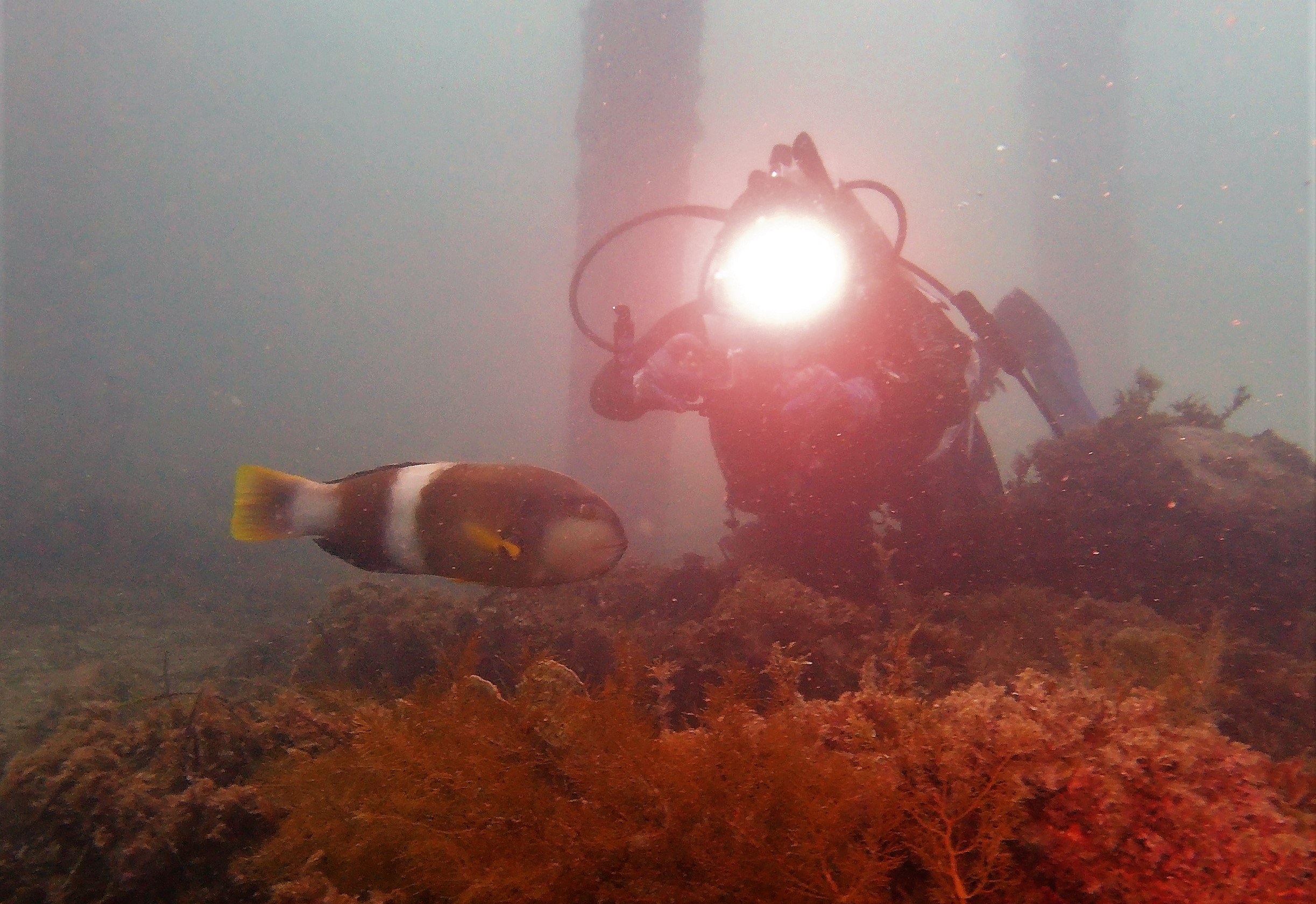I wanted to do a shallow sub-tidal snorkel at the cliff base at Carrickalinga. I was able to do a shore entry via a walking track from the North Bay car park. This location has been part of a Green Sanctuary Zone in the Carrickalinga Cliffs MPA since 2014.
(Personal observation: reef species and commercial scalefish numbers and sizes have rallied noticeably within the 4 years* since this Green Zone was gazetted.)
* (At the time of writing.)
I do not have photos of the example I’m about to give, but it ‘says it all’ as far as I’m concerned: In January 2017 I watched a dive buddy from the UK ‘play with’ a large male Bluethroat Wrasse for some minutes. This was during a boat dive midway between Myponga and Carrickalinga beaches i.e. in the middle of the ‘no take’ Green Zone.

He was enthralled by the size, colours and inquisitive antics of the wrasse which showed no fear and kept returning to check him out! I had never seen mature male Bluethroat Wrasse behave like that anywhere in my LGA (which includes all of Yankalilla Bay and Coweelunga Bay) before that.
I had only seen such behaviour in this species when I was diving and snorkelling on remote offshore island reefs rarely visited by fishers and spearos. The obvious reason being the dominant males are first to take the hook or spear, so the attrition rate is much higher for males than females.
Being wrasses and being strongly site associated, the one breeding male for each harem often enjoys a very short reproductively active life and seldom attains full size. The largest female transitions to assume male role then suffers same fate.

I detail this for 3 reasons.
#1: Green Zones do achieve great things and quickly.
#2: We soon realize the ‘big’ male wrasses we’d been thinking were at or near the species’ maximum length were actually quite small.
#3: Apply this scenario to SA’s largest site-associated (territorial) bony fish of rocky reefs, the iconic Western Blue Groper (a wrasse), and it becomes obvious that species needs state-wide full protection status urgently. I do not exaggerate in saying the health and balance of life both plant and animal on virtually all reefs in SA depends on the viability of our top order wrasses.
(Apologies for preaching to the many converted on iNaturalist, but I like to think at least a few new participants might learn from we oldies where shifting baselines are concerned😑)

